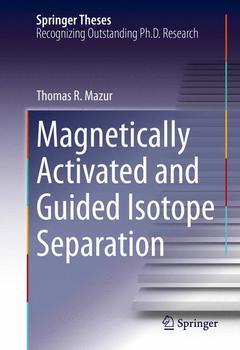Description
Magnetically Activated and Guided Isotope Separation, 1st ed. 2016
Springer Theses Series
Author: Mazur Thomas R.
Language: English
Support: Print on demand
Description
/li>Contents
/li>Biography
/li>Comment
/li>
The MAGIS technique combines optical pumping with a scalable magnetic field gradient to enrich atoms of a specific isotope in an atomic beam. Benchmarking this work against the calutron using lithium as a test case, the author demonstrated comparable enrichment in a manner that should scale to the production of similar quantities, while requiring vastly less energy input.
Nominated by the University of Texas at Austin, USA, as an outstanding Ph.D. thesis
Describes a novel technique for stable isotope enrichment with broad potential across many isotopes
Offers a detailed description of the proof-of-principle experimental setup and measurement analysis




